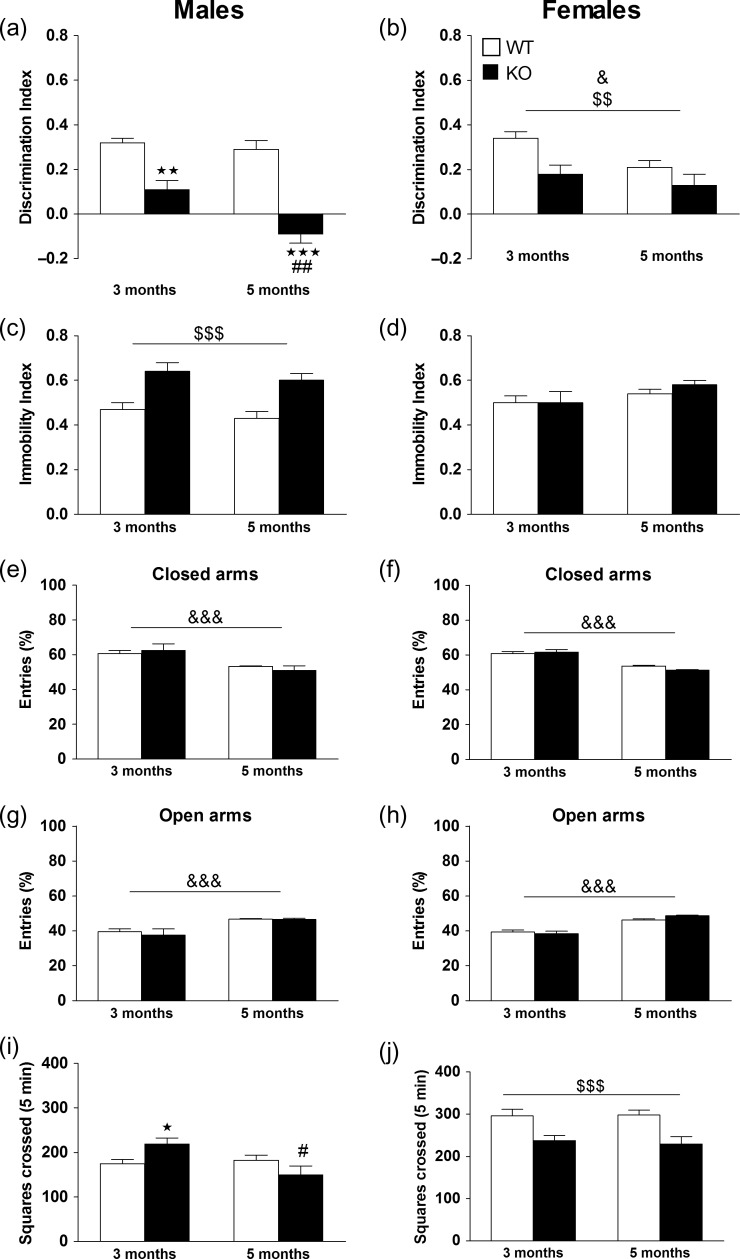Figure 1.
Behavioral performance in male and female WT and KO mice. Long-term recognition memory was assessed in the novel object recognition test by determining the discrimination index in male WT (n = 19) and KO (n = 13) (a) and in female WT (n = 21) and KO (n = 16) (b) mice at 3 and 5 months of age. Values are mean + SEM **P < 0.01, ***P < 0.001 versus WT group; ##P < 0.01 versus KO group at 3 months, &P < 0.05, (age effect), $$P < 0.01 (genotype effect). Depression-like behavior was evaluated by calculating the immobility index in male WT (n = 17) and KO (n = 13) (c) and in female WT (n = 25) and KO (n = 15) (d) mice at 3 and 5 months of age. Values are mean + SEM. $$$P < 0.001 (genotype effect). For anxiety-like behavior, the percentage of entries was evaluated in the closed (e) and open (g) arms in male WT (n = 19) and KO (n = 12) mice, and in the closed (f) and open (h) arms in female WT (n = 24) and KO (n = 15) mice at 3 and 5 months of age. Values are mean + SEM. &&&P < 0.001 (age effect). Locomotor activity was assessed in the novel open field test. Squares crossed in the periphery of the arena are shown for male WT (n = 19) and KO (n = 12) (i) and for female WT (n = 24) and KO (n = 15) (j) mice at 3 and 5 months of age. Values show the mean + SEM. *P < 0.05 versus WT group, #P < 0.05 versus KO at 3 months of age, §§§P < 0.001 (genotype effect) Repeated measures ANOVA followed by Bonferroni’s post hoc analysis. See Supplementary Table S5 for statistical values.

